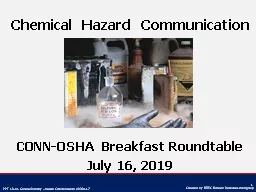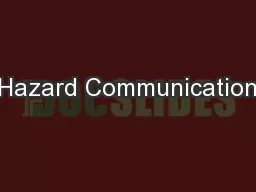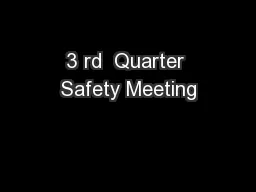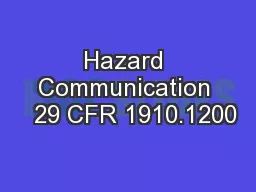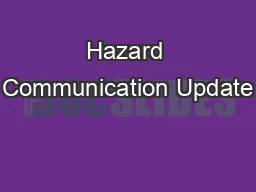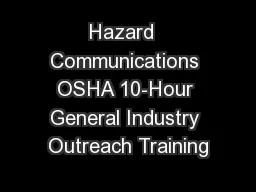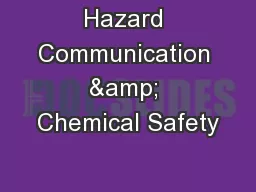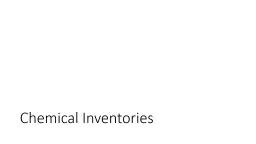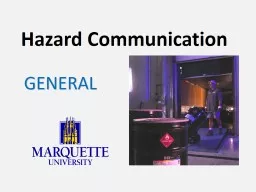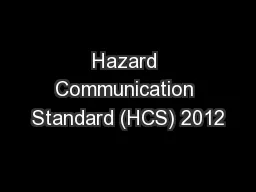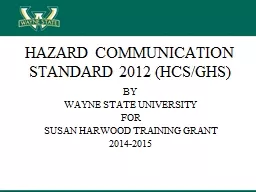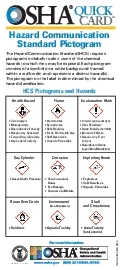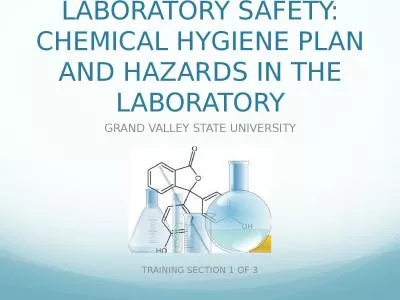PPT-Chemical Hazard Communication
Author : jane-oiler | Published Date : 2019-12-24
Chemical Hazard Communication CONNOSHA Breakfast Roundtable July 16 2019 Man dies after accidental worksite poisoning A metalworker died two days after accidentally
Presentation Embed Code
Download Presentation
Download Presentation The PPT/PDF document "Chemical Hazard Communication" is the property of its rightful owner. Permission is granted to download and print the materials on this website for personal, non-commercial use only, and to display it on your personal computer provided you do not modify the materials and that you retain all copyright notices contained in the materials. By downloading content from our website, you accept the terms of this agreement.
Chemical Hazard Communication: Transcript
Download Rules Of Document
"Chemical Hazard Communication"The content belongs to its owner. You may download and print it for personal use, without modification, and keep all copyright notices. By downloading, you agree to these terms.
Related Documents

